As I find myself at the intersection of drawing and weaving, questions arise about the intent of my work. Does it lead to a deeper integration of techniques or blur boundaries between mediums? My studies have propelled me to keep exploring, revealing that the process becomes a means to express intentions. Is this intellectual, practical, or a blend of both? Drawing, often seen as an internal dialogue, shares similarities with my weaving experience. Drawing serves as an internal dialogue, akin to weaving, which becomes an interaction of thoughts inspired by daily experiences such as collecting found objects and wire work.
After a recent critique of my making, I was recommended to read Susan Sontag’s essay “Against Interpretation” (1966). The excerpts about transparency, recovering our senses, and the role of criticism resonate with my current exploration. Looking at this making with wire thread and about Susan Sontag’s essay, I ask myself if exploring transparency further adds depth to this material inquiry. Transparency, as Sontag describes it, involves experiencing the luminousness of things in themselves and cutting back content to see the essence of the artwork. (See Fig. 1 and Fig. 2 )
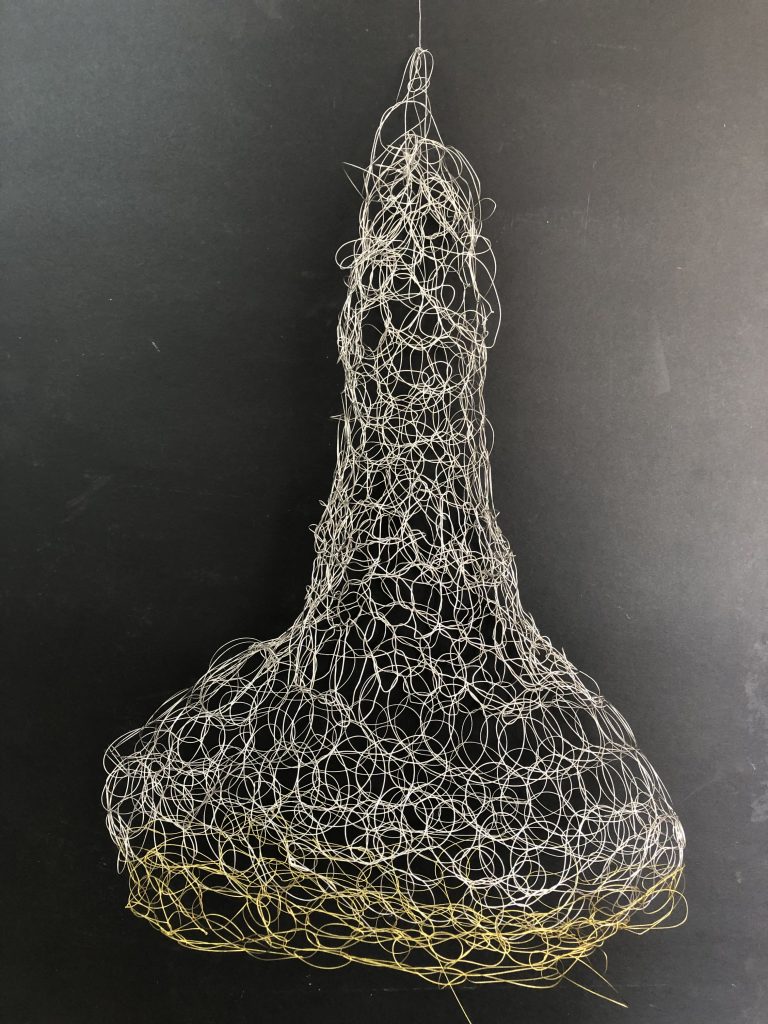
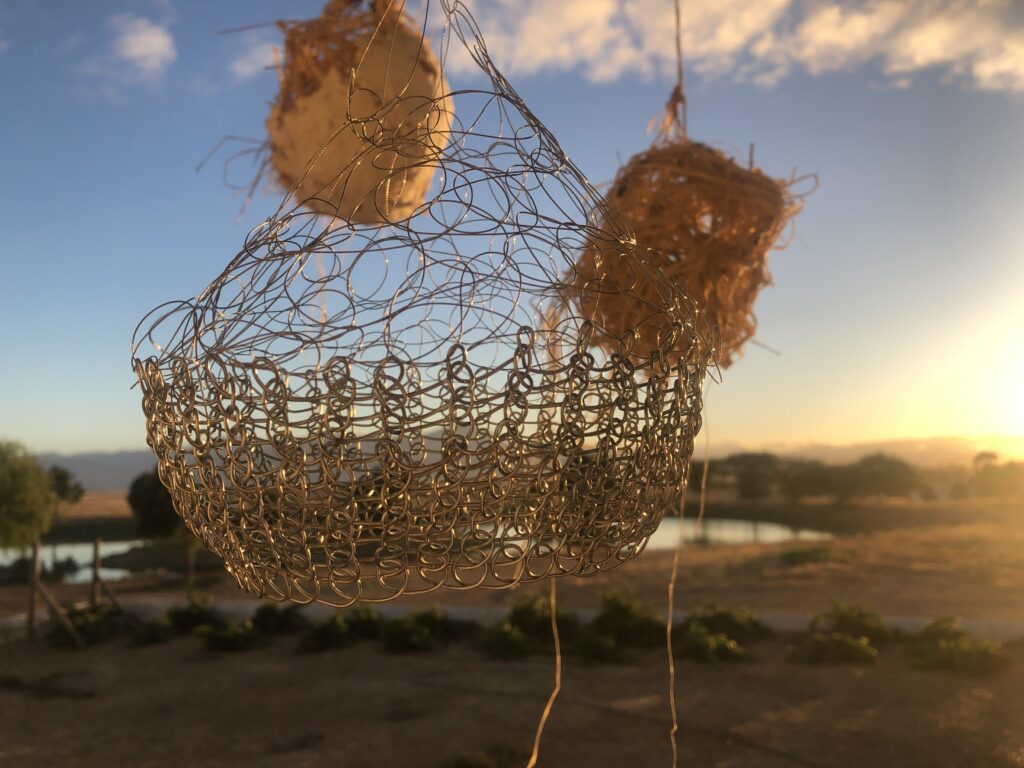
Fig. 2. Wires, February 2024
Here I took the work outside to the two nests I installed on our verandah.
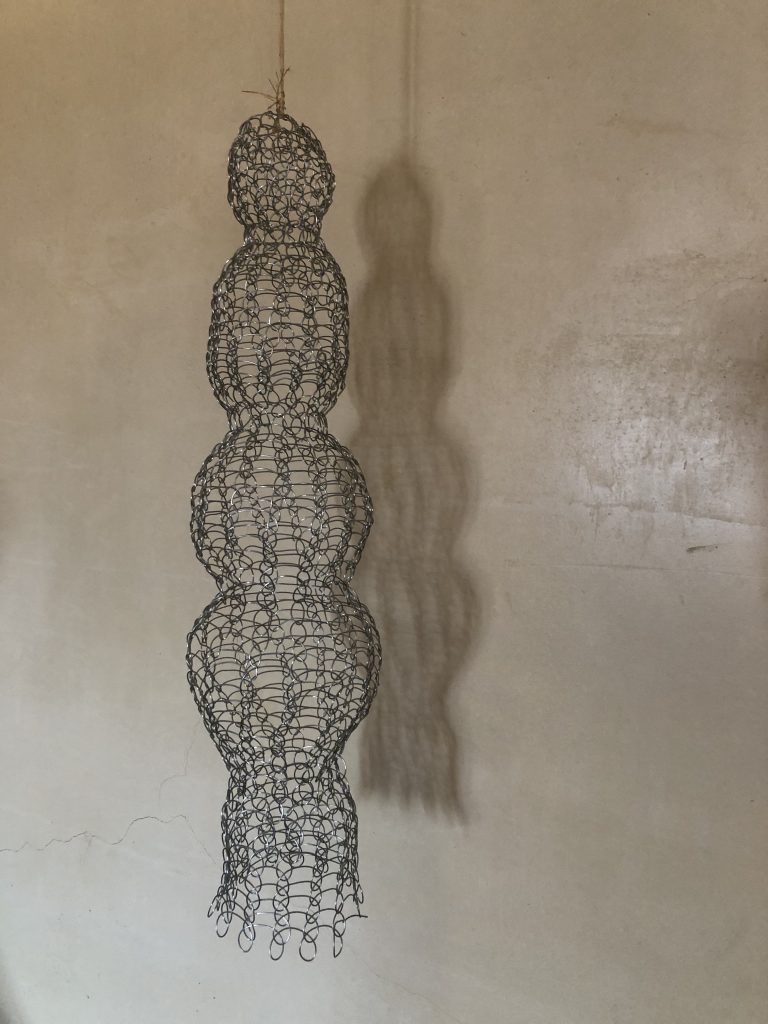
As it is hanging, the wire work touches on thoughts around feminism and societal hierarchies and I contemplate the potential links between traditional female roles and my exploration of nests. Contextually, my work delves into narratives of loss, repair, care, interconnectedness, deconstruction, and place. Originating from a personal need for healing and connection, creating large-scale nests or cocoon-like objects is a therapeutic engagement with materials. A friend shared an article (Arch Daily, online version) about the traditional building of huts in African cultures, which made me think about how weaving becomes a means to shape and structure materials, contributing to the overall sensory and perceptual experience for both the artist and the viewer. It talks about how artists dialogue with the materials and the medium, fostering a reflective practice that deepens their understanding of the craft and its expressive potential. On another level, in its woven form, a nest as a home/shelter speaks of a woman’s body being a container and a space for shared or individual stories and experiences. It talks about our thoughts, joys, growth and sorrows. At this stage, I also explore the forms as drawings and play with colour and texture.
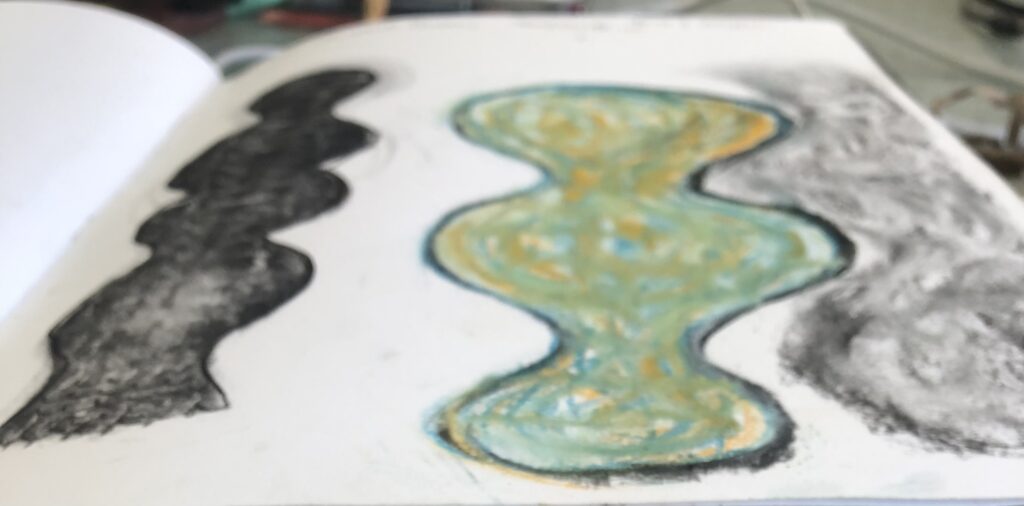
My fingers take a beating, and I protect them from the rigid steel wire
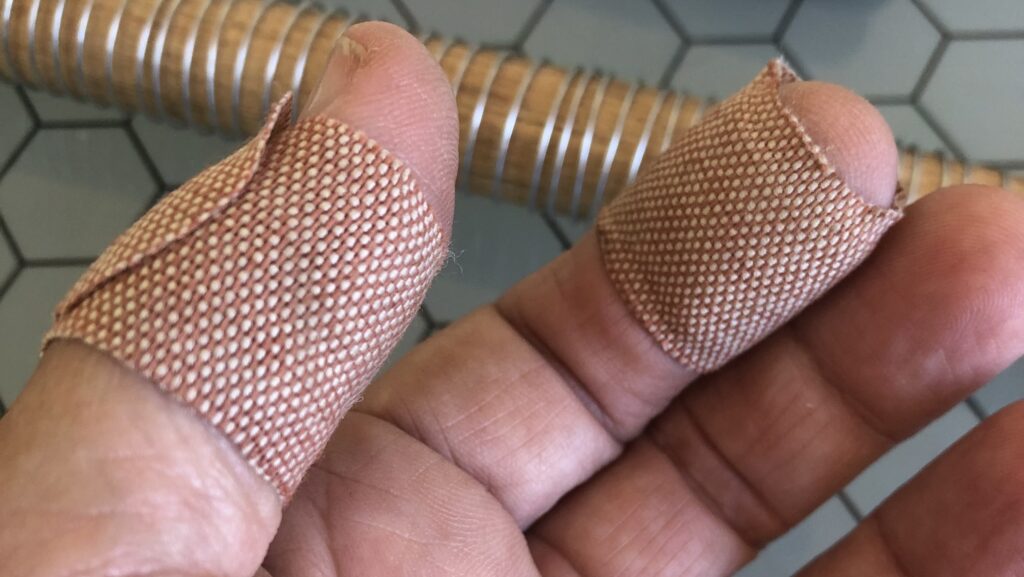
SHIFT: My artistic journey becomes a way to navigate connections, raising questions about their permanence and contributing to a deeper understanding of hidden narratives within nests, families, homes, and communities. The weaving process connects me with my designs. I soon learn that this connection can imply a personal and intimate relationship with the woven creations, where the artist’s intentions and emotions are woven into the fabric. I have written about my personal experience with loss and death of my son, but I also like the idea that a viewer can be within the space of these objects when they are hung from the ceiling as installations (I start envisioning taking my work outside). The experience becomes more participative. Creating large-scale nests or cocoon-like objects is an artistic endeavour and a therapeutic engagement with materials. This process allows me to navigate themes of healing and connection, where the act of weaving becomes a form of self-expression and introspection.
SKILLS AND NETWORKS
Learning skills to make with copper or wire has mostly taken me to research on the internet. I have not met with any local artists who would be able to assist other than a recent workshop held at a gallery. This was not a looping technique, but at least I could connect to artists working with the same materials.
Working with copper wire is a different process, as I have not yet found a supplier where I can buy separate ‘strings’ of copper. I buy from an electrical supply wholesaler, but the wire consists of 6 strands of copper wire. It takes effort to unwind and then coil these strings. It is much softer on my hands, though. Below are images of the different cables and a recent project I started with the coiled e-loops of copper wire.
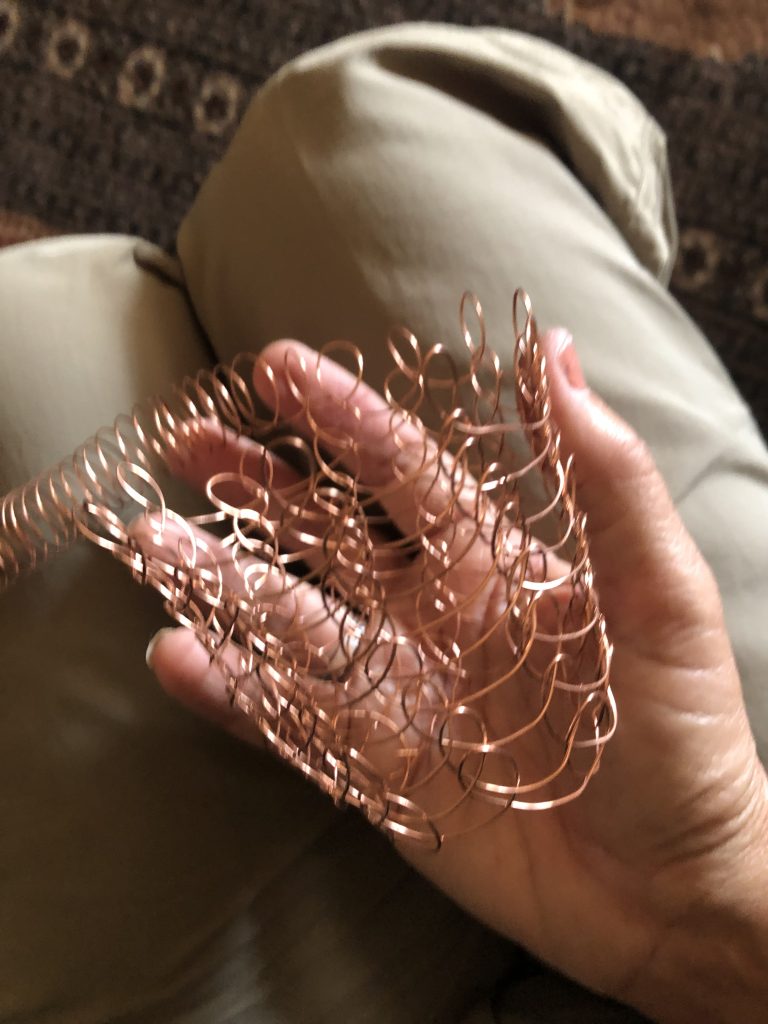
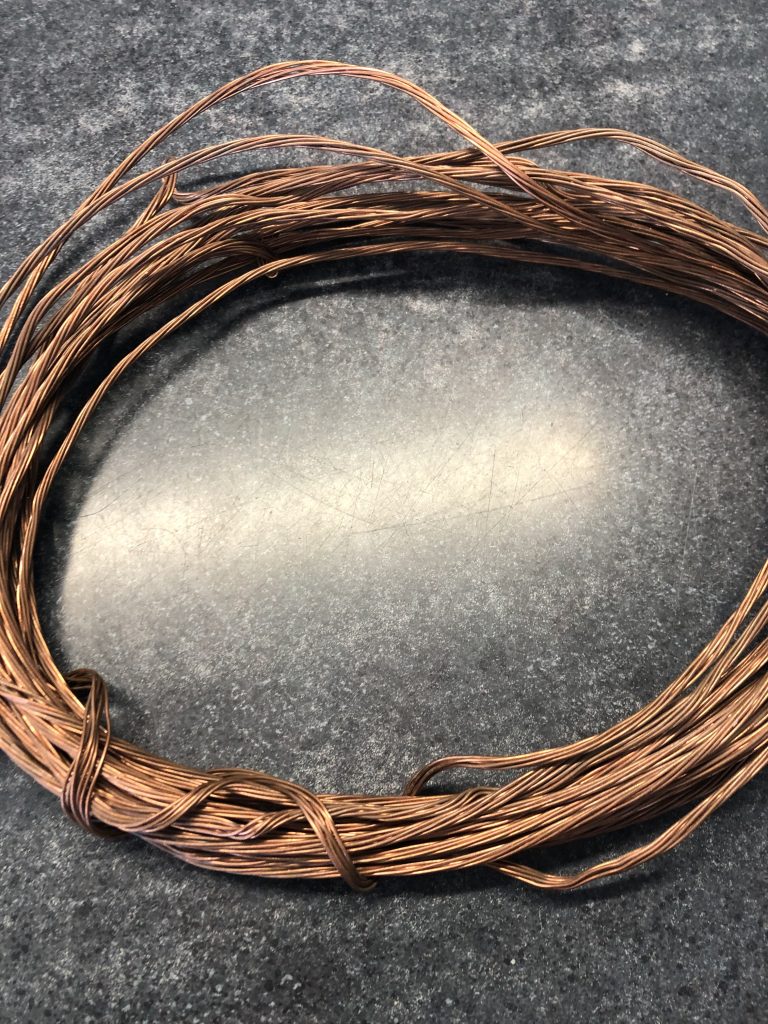
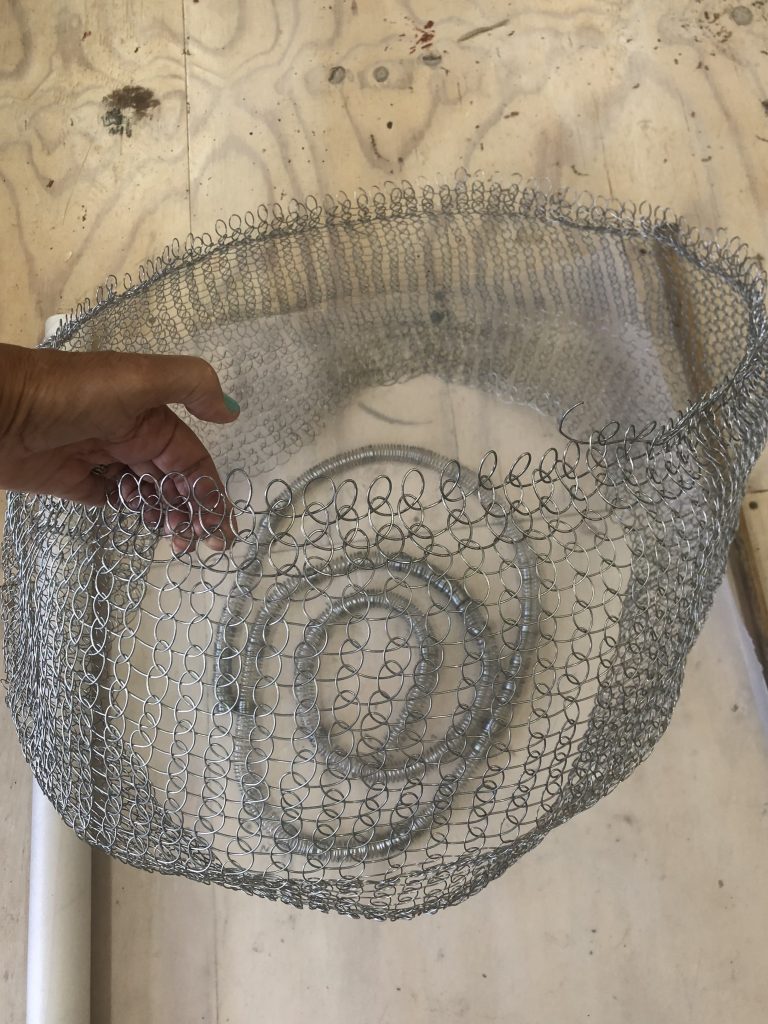
I have also considered looking into the historical link between traditional female roles in the domestic part of (so many) cultures and/or whether these objects and nests are part of my feminism ‘ideology’ and search for an understanding of societal hierarchies. I asked myself if my nests symbolize this labour. Could the physical act of making a nest with wire reflect the toil and resilience inherent in caregiving? I do think about motherhood – from the instinctive act of nesting in animals to the human concept of nesting, especially in the context of motherhood. For example, human mothers often prepare the home (“nesting”) as part of maternal care. Birds build nests to incubate eggs and rear their young, in the case of the sociable weaver there is the communal nest with benefits of sharing the maintenance and care.
I would argue that I am contextually exploring narratives of loss, repair, care, interconnectedness, deconstruction, and place. On a personal level, it originated from loss – a re-visit and healing process of what connections are hidden in a nest/family/home/group/community. By making large-scale nests or cocoon-like objects, my body can engage with the material and allow my healing process. I look at my process as a way to make connections. Whether they are permanent is a question I had to deal with.
The making is now a process of manipulating, controlling and transforming material.
Below is my diagram of a visual representation of the fusion of drawing and weaving in my art practice.
- The left side shows the drawing process as an internal dialogue, with arrows indicating the flow of thoughts and experiences.
- The right side shows the process of weaving, representing tactile engagement.
- Below is the recording of the outcomes
- The centre represents the intersection where drawing and weaving meet, symbolizing the blurring of boundaries between mediums.
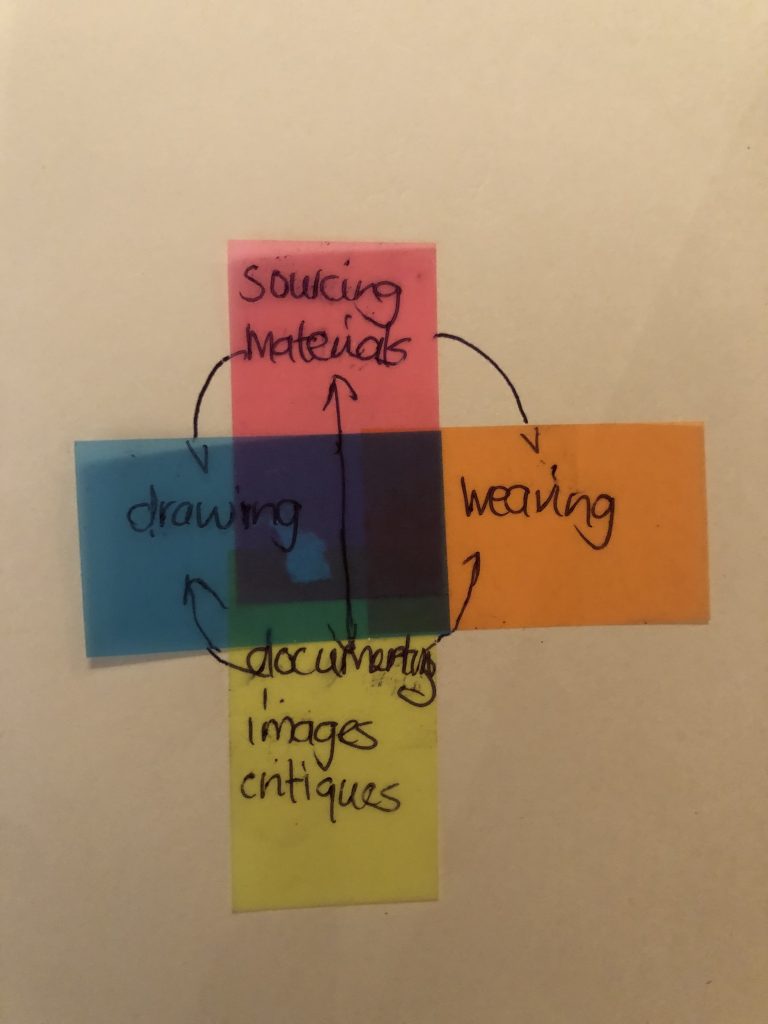
This was a very quick, playful way to start thinking of diagrams.
I also thought to make a diagram about my thoughts on making a Feminist Inquiry and explore Societal Hierarchies:
Here, the diagram should visualize my feminist inquiry into nests and their historical linkages to traditional female roles. I can show a nest in the middle, which acts as a central nest and represents the theme of interconnectedness and care. With surrounding circles, I can show different themes such as loss, repair, and societal hierarchies. I can connect these themes by bringing arrows into the diagram, indicating how they are interwoven in your exploration. This shares a form of thinking as looping or weaving as I can look at history, knowledge, and research to help me gain more understanding to apply this to my conceptual ideas around layers within the work.
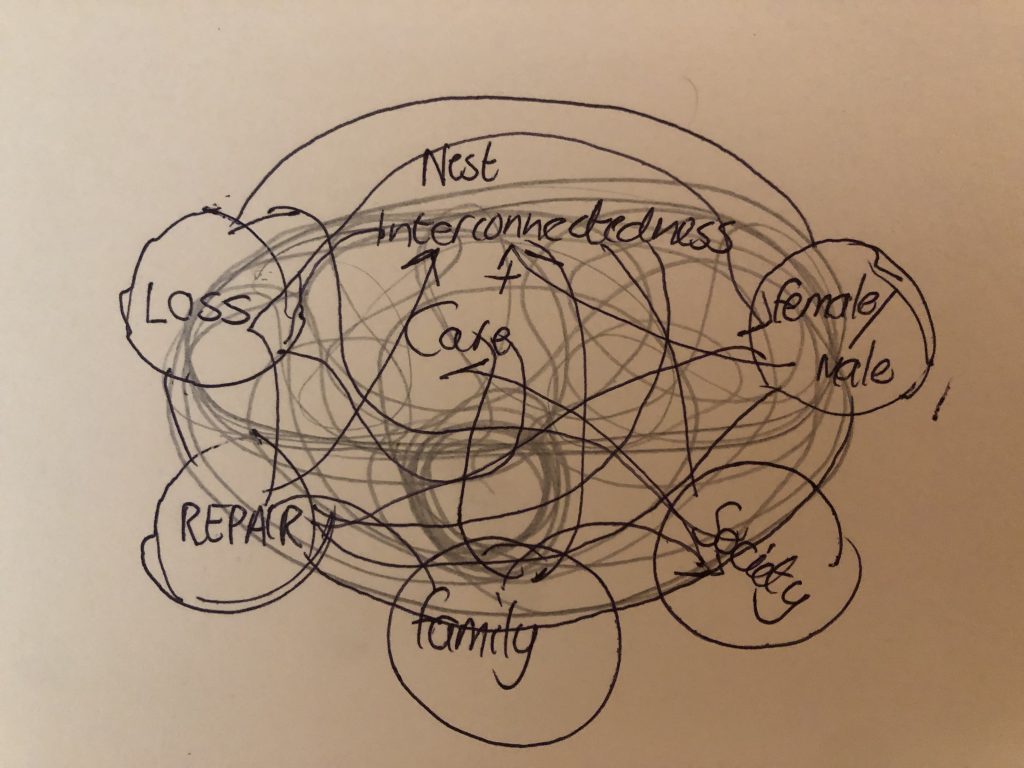
In addition to the above work, I wrote a separate blog post called Looping as Writing or Drawing in the Air. This can be accessed at: https://karenstanderart.co.za/looping-as-writing-or-drawing/